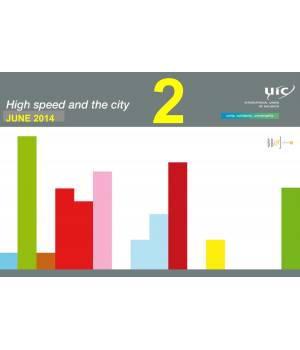


High speed rail services mean attractive travel times. High speed rail services being less rapid than air still can hold the majority of market shares when the travel time ranges between 2h and 3h30. This finding leads to the conclusion that the door-todoor travel time is the relevant element for modal choice. The question is consequently, how to reduce the door-to-door travel time when serving large built-up areas?
Another important issue relating with rail is the capacity of the stations. This issue is even more stringent with high speed rail which means bigger volumes of passengers, particularly to and from main cities.
The station, as interface between the city (Society) and high speed rail, is a very important and strategic point for all the actors involved: passengers, railway undertakings, infrastructure managers and the city itself. Very often, there is only one station in a big city. It is generally located in the densely populated core city.
The upside of this location is the good intermodality with urban modes and the downside is the strong limitations it lays on traffic development traffic and comfort for passengers.
Very often, the total number of passengers per year amounts to several times the city population and high speed services boosts this ridership producing saturation of terminals. Consequently one of the issues is to analyse which measures are appropriate to relieve this saturation.
The UIC’s High Speed Department, taking into account the preoccupations and preconisations coming from its members, launched in 2009 a study, with the title High Speed and the city, in order to understand the benefits of serving a city with several HS stations.
The study HSC, presented at the Beijing High Speed Congress, covered the following cities:
The general objective of the study was to benchmark various cases worldwide so as to understand the pros and cons of various schemes to increase accessibility and capacity for HS stations.
UIC signed a contract for its development with BB&J Consult SA on January 2009.
In 2013, UIC decided to perform the present study, named High Speed & the City 2. following the same methodology and analysis, but now referred to HS line projects that are not yet in service, but at the planning, design or construction stage.
| Author | UIC - High Speed Department |
| ISBN | 978-2-7461-2604-6 |
| Pages | 118 |
Fiche technique